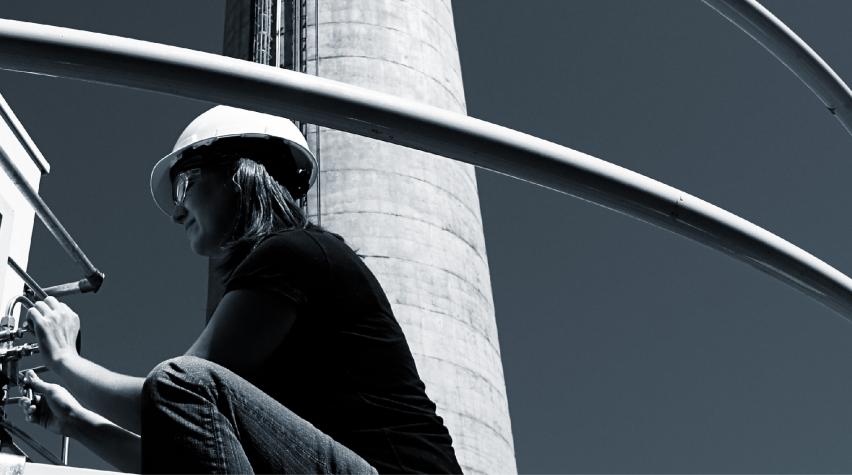
The impending CO2 emissions reduction requirements promulgated by the EPA will drive the need for retrofits on many existing coal-fired power plants. The potential costs of these retrofits in capital, operating cost increases and efficiency reductions were studied, and preliminary results and implications on the cost of electricity were reported by Maryam Sayyah of ADA.
Solid Sorbent Process
ADA is currently in the testing phase of a 1-megawatt pilot demonstration carbon capture unit based on a solid amine sorbent thermal swing process system. After combustion gasses have gone through the emissions control units, the gas (roughly 12% CO2, 12% water, 4% oxygen, and the balance nitrogen) is desufurized in a polishing scrubber and treated in the capture unit. The resulting gas stream then goes through the baghouse and out the stack. The loaded sorbent is pneumatically conveyed to a single stage fluidized bed where the CO2 is stripped (some of which is recycled as fluidizing gas) with steam from the power plant, and the regenerated adsorbent is returned to the adsorber.
Any CO2 capture system increases water use at the power plant, though the solid sorbent process is less water intensive than a liquid amine system. ADA is currently in parametric testing phase with the system, validating the kinetics, capacities of the sorbents, and other process variables.
CO2 reduction target
The current proposed limits for CO2 emissions from new coal-fired power plants is 1,100 lbs/hour, which is roughly a 45-50% decrease from emission levels of current plants. In addition, the Department of Energy has estimated that the target cost of CO2 capture would be $40/ton in 2025. It is important to note that there are no CO2 capture requirement proposed for natural gas-fired power plants.
Costs evaluation
Based on some of the preliminary results from the pilot system and other industry baseline data, some estimates of the costs of capture are beginning to emerge, and they are not pretty! From a capital investment standpoint, a 550 MW power plant will consume an additional $2.0 billion. Indeed, for the 110mW Boundary Dam project in Canada, the capital cost associated with the captures system is $1.24 billion. Along with the increased capital, there are ongoing costs increases associated with the operation of the system that are estimated at 15-20%. These are compounded by the loss of efficiency effect of "using" a portion of the plant's generated electricity capacity to run the capture. This efficiency loss is will be in the 20-30% range.
The increase in the cost of electricity generated from a capture outfitted coal-fired power plant due to these higher investment and operating costs and lower overall efficiency is estimated to be up to 80%, from $0.08 to $0.12 - $0.14/kWhr. Unfortunately, without any changes, government support, tax incentives, etc., the expected additional costs will likely preclude any significant new research effort into CO2 capture technology and implementation, resulting ultimately and eventually in a natural-gas-fired plant predominance, and an underutilization of an abundant energy source in America.

Maryam Sayyah of ADA


